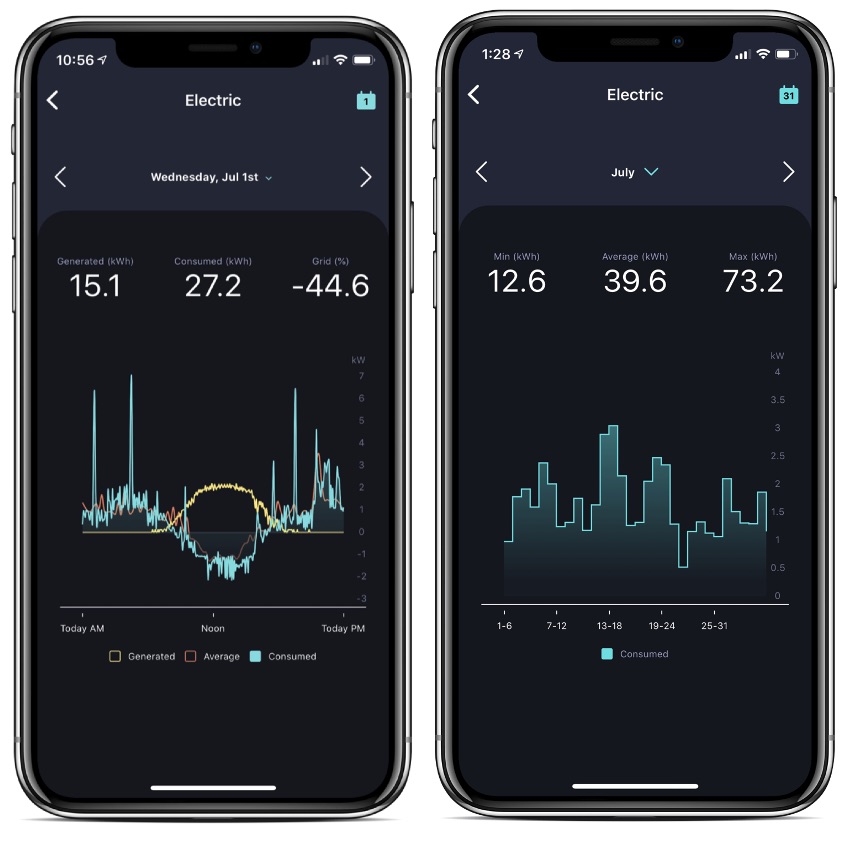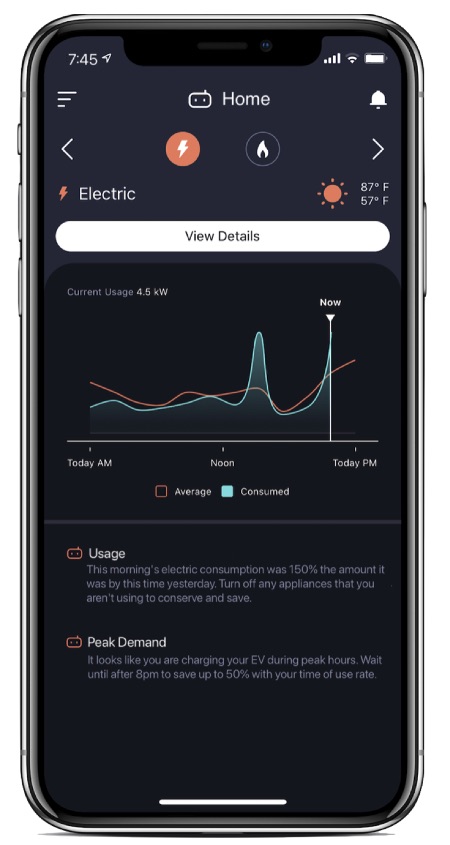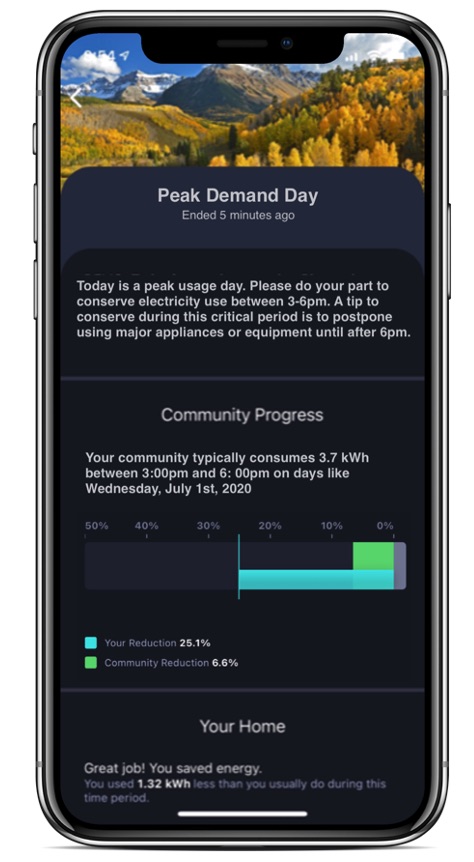After months of quarantining and safer-at-home policies enacted around the country, one thing is clear: how and where we consume energy is changing dramatically. With so many people now working from anywhere (except the office, that is), we are witnessing profound shifts in energy usage. As we continue to settle into remote work arrangements, the demands on residential electricity, gas and water will continue to rise. And so will the price tag that consumers will have to pay.
This is exactly why we’re so excited to share some of the features that are included in the new Copper Labs app, which is available to consumers through our utility partners. Our entire platform is built around empowering consumers to manage energy loads — and their bills — when it matters most.
1. Improved real-time energy visualizations of electric, natural gas, solar and water consumption.
What would an energy monitor be without charts and graphs? Copper displays real-time energy consumption and compares it to the rolling average to put it into perspective. Whether you’re an aspiring energy geek or simply want to learn the scale and timing of energy consumption, this feature helps every user get to know their home.
Additionally, the monthly summary helps consumers see how incremental energy consumption changes add up or save on a daily basis.
Both screens provide quantitative summaries showing the average energy (kWh or CCF) total energy consumption, and percentage comparison to the average.

2. Save energy and make informed consumption decisions through personalized insights and anomaly detection.
The dashboard screen presents personalized insights while also serving as a starting point for other functionality. The personalized insights are automatically created with Copper’s machine learning algorithms that periodically call attention to specific energy usage patterns or anomalies in the home. It includes the projected high and low temperatures for the day to inform decisions about precooling or heating before peak periods. The dashboard is also the place to toggle between real-time electricity and natural gas usage data.
Current and past notifications can be viewed by clicking the bell icon. Notifications initiated from Copper’s utility portal, like a demand response event, have an additional layer of detail mentioned below. Additionally, settings can be accessed from the dashboard screen. Settings include adding a new meter, troubleshooting & support and quick links to add a user in your household.

3. Gamification and utility-initiated demand response notifications.
Copper uniquely accesses real-time energy usage data from smart AMI and driveby AMR meters. Additionally, Copper’s utility portal provides utilities with the tools to target energy users with demand management messages based on geography, energy consumption, major appliances and more.
Before a demand response event, a push notification calls attention to specific time periods to adjust energy consumption. Both during and after the event, Copper presents the energy savings and compares that to aggregated and anonymized data from other program participants to encourage further savings and increased persistence throughout longer events. A utility logo or a community image, such as a skyline/landscape, can be embedded in the event details for branding.

Through this unique new application, Copper helps utilities take control of energy demand with real-time visibility behind the meter and a new channel to engage customers with actionable insights. Key peak periods for energy systems tend to be in the summer and winter months, but Copper continues during the shoulder months when it comes to customer engagement and continuous improvement. The recently updated app is available to energy consumers through utility programs, and the app’s holistic approach educates, engages and encourages consumers to manage energy load when it matters most to them and to the utility.